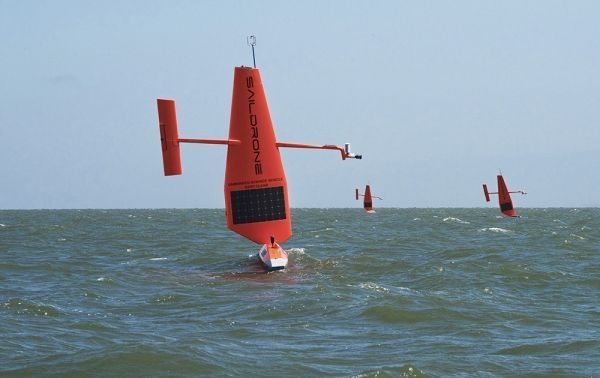In March 2009, engineer Richard Jenkins broke the world land speed record for a wind-powered vehicle by sailing a bright green sailboat on wheels across a dried lakebed in Nevada at 126 miles per hour. Now, after many engineering developments and an orange paint job, Jenkins’ design autonomously sails the sea gathering ecologic, oceanic, and atmospheric data in the employ of NOAA.
The public-private partnership between NOAA and Saildrone Inc., Jenkins’ startup company, began in 2014 when Chris Meinig of NOAA’s Pacific Marine Environmental Laboratory (PMEL) met Jenkins. Meinig saw the saildrone’s potential for cost-effectively enhancing NOAA’s existing ocean-monitoring fleet of buoys, ships, and autonomous vehicles.
Working together with Saildrone Inc., Meinig and his PMEL and NOAA Fisheries colleagues customized the saildrones by adding sensors to meet NOAA’s diverse data collecting needs. The 20-foot tall drones now carry over 200 pounds of instruments.
“It’s a single platform that can measure interdisciplinary aspects. You not only get the ocean physics, you also get biogeochemistry and CO2, or even acoustic backscatter, and an understanding of the critters in the water,” said Meinig.
Continue reading at NOAA.
Image via NOAA.


